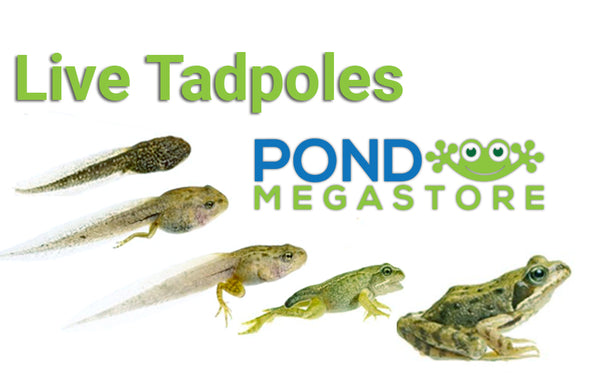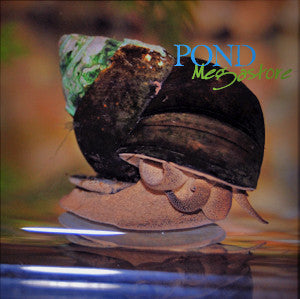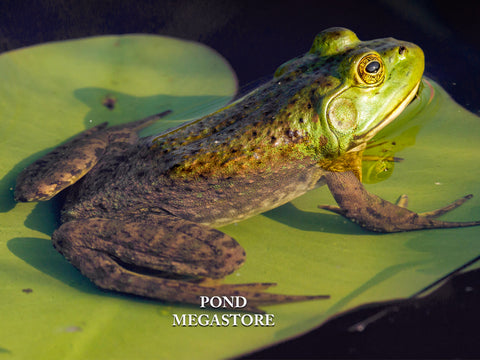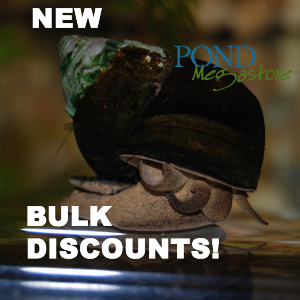Small Quantity Tadpoles for sale:
Ships "2 Day UPS or other 2-day service" on the day we ship! We usually choose one day each week to do tadpole orders. Note in 2025, UPS is continuing a new rural deferred delivery which delays orders to very rural addresses by one day, which delays packages by 1 days in rural areas; in this case, we may need to find an alternative 2-day service or refund this item.
Tadpoles
We have two tadpole choices for you.
1.) Our Nursery supplies a small quantity of tadpoles, a general mix, and we do not separate the species for one type of tadpole or another. The mix is of green frogs and occasionally bullfrogs. We mainly ship UPS from the nursery. Our costs on 2-day shipping for lower amounts of tadpoles can be as high as $53 + packing costs.
2.) Our Fishery ships large quantities of tadpoles, which include bullfrog tadpoles tadpoles--you must order the tadpole item that is bulk quantity tadpoles . If you wish to order these, please go to our bulk quantity tadpole page! The bulk quantity of tadpoles costs less per tadpole because most of our costs are built into the tadpole price. The actual cost of overnight shipping to most of the USA is currently $100-150 per box shipped overnight express, a foil liner $14 and ice if needed $1, the box $2,80, and oxygen come to another $19. This is why the cost is high however divided by more tadpoles the bulk quantity will be a lower cost per tadpole. The Fishery ships UPS or Fedex overnight.
d.
Tadpole Diet
What do tadpoles eat? They eat algae and soft bodied, submerged plants like Hornwort and Vallisneria. Hornwort is by far their favorite. 8 tadpoles can eat 15 bunches in about 20 days! Hopefully, there will be some algae in the pond to satisfy their appetite-- but these plants are a great supplement to their diet! Some larger tadpoles like green frog tadpoles and bull frog tadpoles also eat mosquito larvae in calm water, though mosquito larvae are not common in planted ponds or bodies of water.
Tadpoles add character and ambiance to a water garden setting. Listening to the frogs singing in the springtime is joyful! Green Frog Tadpoles are harmless and feed on mosquito larvae and algae in the pond. They also feed on any insect eggs before the eggs hatch. Eventually, these tadpoles change into small frogs and begin eating insects around the pond. Unlike toads, frogs must stay near a water source. It is fun to see frogs sunning themselves while sitting on rocks around the pond or on lily pads on lazy, sunny afternoons.
Tadpoles, should not be kept in fish bowls or aquariums. They have very active digestive systems and foul the water more quickly than fish. This can lead to ammonia bursts in smaller unfiltered bodies of water and the death of the tadpoles. Outdoors in a pond with plants, this will not be an issue, and that is where these tadpoles need to come to adulthood.
Please note the cost with a minimum quantity!
This is a Box, full of water and oxygen, as well as tadpoles.
It is very heavy, usually 8-9 lbs. Boxes contain roughly 15-20% water and 80-85% oxygen.
Q. Why do you sell bulk quantity and small quantity separately?
A. They come from two separate locations. Tadpoles usually arrive in separate boxes from other items, with the exception of trapdoor pond snails--if you should order tadpoles AND pond snails, both varieties may be shipped together.
Bulk Quantity tadpoles ship in larger boxes and only by overnight express, a charge of which we build into the cost of the tadpoles* Bulk Quantity which is a different item will contain Green Frog Tadpoles... Please Note, you are on our small quantity item which is a mix of green frogs and leopard frog tadpoles.
Smaller Quantity tadpoles (the item you can order on this page) can be shipped Priority mail or UPS only in spring (March 1 to June 14) as they cannot tolerate long trips during high or low temperatures. During the summer this option is not available due to the 2-3 day transit being too long for hot weather.
Be Ready On Arrival!
Live Tadpoles should spend as little time in transit as possible. The bag inside the box is filled with about 80% oxygen and only 20% or so, of water. Tadpoles have extremely active metabolisms and excrete a higher percentage of waste-- much more than the fish we ship. 100% or near 100%, should arrive alive, even though the water in the box is turning toxic quickly. Do not open the bag to change water or put it in the sun for even a moment, as you will release the remaining oxygen we added.
Take the box of tadpoles immediately to the pond. Release near vegetation as gently as possible. Vegetation provides food and some protection from predators like bass or birds.
DO NOT FLOAT THE BAGS, the water in the bag is no longer any good, and even on cloudy days the sun will be enough to heat the water in the bag quickly. In a backyard pond it would be best to have a mesh fish net at least 10 inches across and a 5 gallon bucket or container. Next, place your net on top of an empty bucket and slowly pour the water and tadpoles through the net on the top. The water should go through the net into the bucket and the tadpoles should be caught in the fine mesh net. Immediately put the tadpoles into your pond. These Frog Tadpoles are too large for tanks or aquariums and will not survive there, as the water fouls far too quickly.
Creating a Frog Population in a Pond
Tadpoles eat small bits of soft algae, submerged plants like Hornwort and Vallisneria. They also eat mosquito larvae when present in the water. Adult frogs are territorial and need vegetation in and near the pond to stay around. Pickerel Rush, Waterlilies, Obedient Plant, Water Hyacinths and other plants that attract pollinators are great for a larger frog population as they offer protection and increase the food supply. Green frog tadpoles are too large for tanks or aquariums and will not survive there. The water fouls far too quickly. They need an amazing amount of clean, fresh water, a way to get out of the water by the time they have front legs. They will also need live, submerged plants as food.








